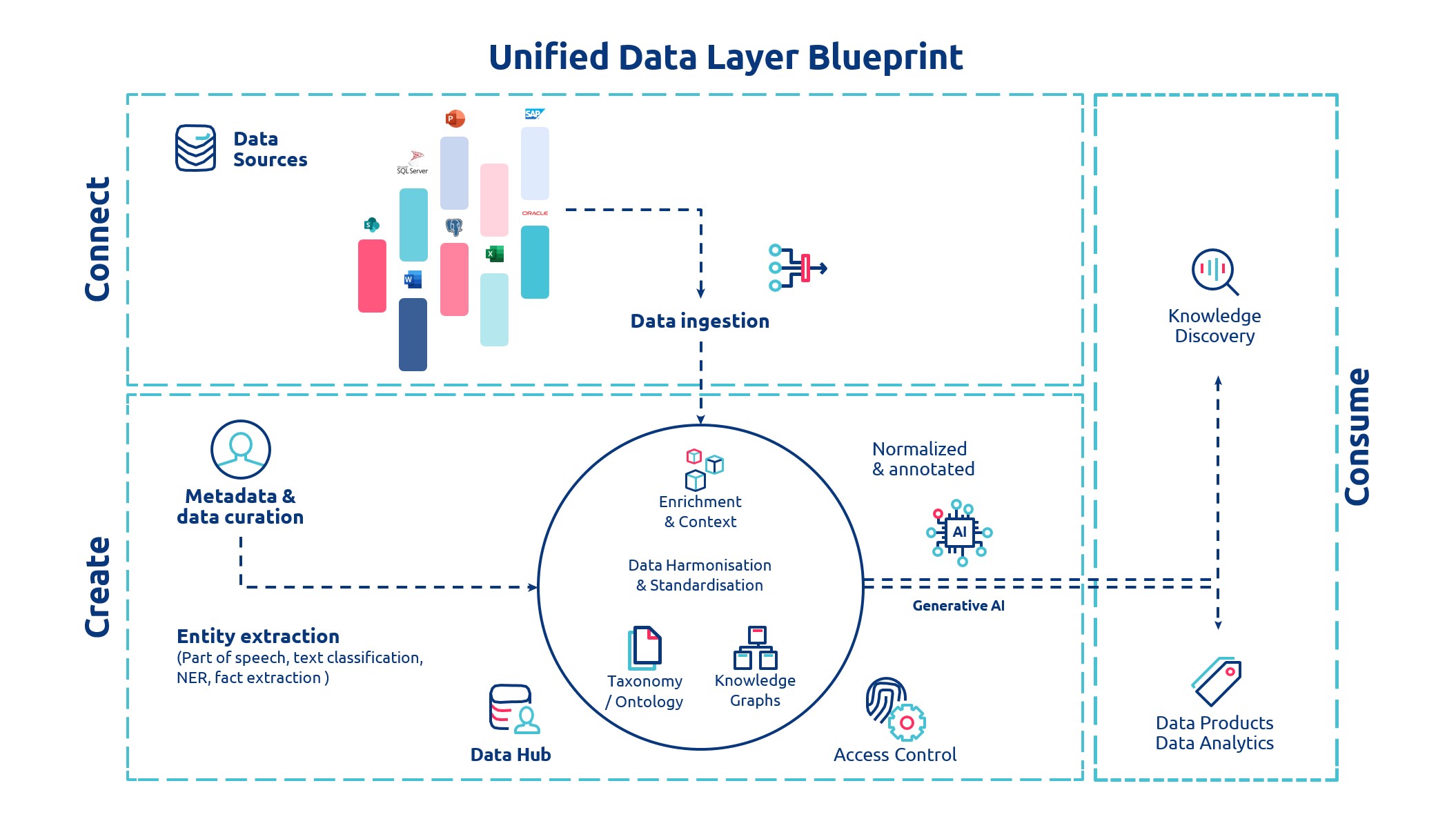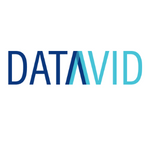Knowledge - when effectively applied - can act as a powerful catalyst, driving organisations towards unprecedented heights of development and efficiency.

Data chaos in public sector organisations
As public sector organisations race towards their ideal, they encounter a complex maze of data challenges that hinder their progress. The struggle with disorganised, unstructured, and isolated data repositories is real, leading to inefficiencies, overlooked opportunities, and escalating costs.
To navigate this labyrinth, a strategic approach towards data management is not just beneficial but imperative.
Organisations must adopt robust data management strategies, leverage advanced technology solutions, and foster a culture of data literacy. Integrating insights into everyday processes ensures that organisations stay relevant and continuously evolve, cultivating an environment of perpetual learning and advancement.
Introducing the Unified Data Layer (UDL)
The Unified Data Layer (UDL) is a revolutionary concept designed to cut through the chaos of data management. The UDL, with its foundation in cutting-edge Artificial Intelligence (AI) technologies such as Natural Language Processing (NLP), Machine Learning (ML), and Large Language Models (LLMs), offers a beacon of hope.

The UDL facilitates interaction among different AI components, exemplifying the practical application of LLMs and Knowledge Graphs collaboration in the real world, where Knowledge Graphs enhance data accuracy and interpretability for UDL. At the same time, LLMs mitigate challenges posed by incomplete knowledge graphs by generating contextually relevant text.
The UDL serves as a centralised hub for data, effectively breaking down the barriers posed by traditional data silos. This centralisation of data is more than just an organisational boon; it is a strategic asset that significantly enhances the findability and accessibility of information.
Benefits of UDL
The benefits of such centralisation are manifold. It allows for the seamless integration and analysis of diverse data sets, paving the way for more informed, data-driven decision-making processes.
The UDL transforms data from a static resource into a dynamic, actionable asset. By facilitating the easy access and analysis of data, organisations can make quicker, more accurate decisions, thus staying ahead in the competitive curve.
Moreover, applying advanced AI technologies within the Unified Data Layer amplifies its capabilities. AI's prowess in understanding, categorising, and manipulating large volumes of data is unparalleled.
This fact not only enhances the system's efficiency but also makes it an indispensable tool for businesses and organisations keen on unlocking the full potential of their data assets.
Conclusion
The transition to a Unified Data Layer is not merely a technological upgrade but a strategic move towards building a more resilient, agile, and intelligent organisation.
It requires a shift in mindset from viewing data as a cumbersome necessity to recognising it as a valuable asset that, when properly managed, can lead to significant competitive advantage.
In conclusion, as we forge ahead into an era dominated by data, the adoption of Unified Data Layers represents a critical step towards overcoming the challenges of data chaos.
By centralising data, leveraging AI, and promoting data literacy, organisations can transform their approach to knowledge application, ensuring sustained innovation, growth, and competitiveness.
The journey towards data mastery is complex, but it is undoubtedly achievable with the right strategies and tools.
The future belongs to those who can effectively harness the transformative power of knowledge through innovative data management solutions like the UDL.
Curious to learn more about Unified Data Layer?
Meet us at DigiGov Expo on 24th - 25th September! Find out more about Datavid here, and register for your free place to attend here.

Datavid
Datavid empowers large organizations to make the most of their data by extracting and structuring invaluable insights from unstructured data in any format and from various data sources. Datavid crafts cost-effective data solutions by harnessing your domain knowledge, existing infrastructure, and proven technologies to deliver customer success.



-Apr-25-2024-09-43-35-5584-AM.png?width=80&height=80&name=Untitled%20design%20(77)-Apr-25-2024-09-43-35-5584-AM.png)
